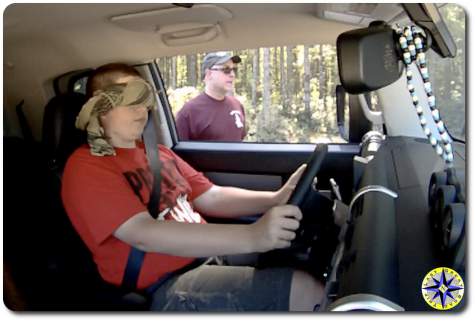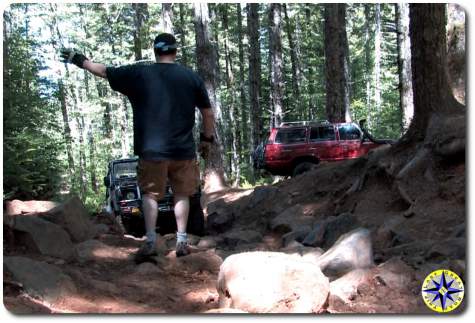 Driving off-road can feel like you have your head on a swivel. You need to see what’s in front of you, behind you and on both sides. And when things get really though you wish you had an extra set of eyes. It’s at this point a trail spotter becomes your best friend.
Driving off-road can feel like you have your head on a swivel. You need to see what’s in front of you, behind you and on both sides. And when things get really though you wish you had an extra set of eyes. It’s at this point a trail spotter becomes your best friend.
The job of a spotter is to driver the truck “remotely” through the obstacle. By seeing what the driver cannot, the spotter instructs the driver which way to turn, how fast to go and when to stop in order to get the truck past a difficult obstacle in the trail.
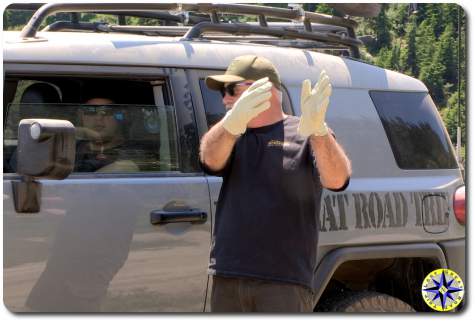 In order to perform this feat, driver and spotter have to trust each other. The driver will need to follow the instructions to a tee and the spotter needs to know how the truck will behave as she has the driver put a wheel on a rock or come down a ledge step.
In order to perform this feat, driver and spotter have to trust each other. The driver will need to follow the instructions to a tee and the spotter needs to know how the truck will behave as she has the driver put a wheel on a rock or come down a ledge step.
Before the driver and spotter get to the driving part, they need to talk and agree on the line and signals as well as honestly discuss driving skills and concerns. This is no time for ego.
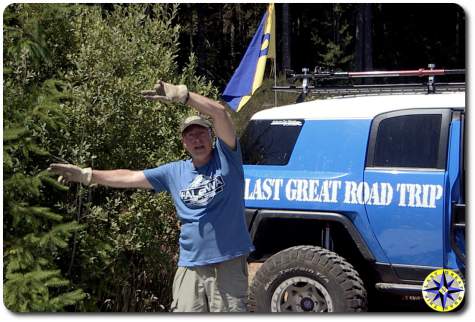 When it comes to spotting signals, bigger is better. It is incredibly hard to tell what the spotter is trying to communicate if they are simply pointing a finger. The spotter needs to get into it. She needs to use big gestures when directing the driver and hand signals should be accompanied with loud vocal commands.
When it comes to spotting signals, bigger is better. It is incredibly hard to tell what the spotter is trying to communicate if they are simply pointing a finger. The spotter needs to get into it. She needs to use big gestures when directing the driver and hand signals should be accompanied with loud vocal commands.
Start with the basics:
- Come Forward – The driver should drive forward with the wheels as they are.
- Turn Driver – The driver should turn the wheel to their left. The spotter’s left and the drivers left are different so get into the habit of using “driver”.
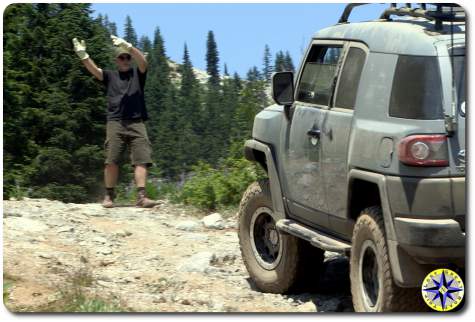
- Turn Passenger -The driver should turn the wheel to their right. The spotter’s right and the drivers right are different so get into the habit of using “passenger”.
- Stop – The driver should stop the truck and maintain control. “Wow” can sound a lot like “go” so avoid it and stay away from ambiguous phases like “hold up”, “that’s good” or “wait”. Let the driver know to “STOP”.
- Backup – Drive the truck in reverse with the wheels as they are.
There is a common problem that can creep up, when there are several bystanders around the truck as it is being spotted. A number of folks may start to give suggestions to the driver, distracting her with “turn left, your other left”, “watch out for the rock”, or a dozen of other misguided directions. They are trying to help but it only makes things worse. This is where the spotter needs to step in, take control and tell everyone to stop helping. There can be only one spotter. 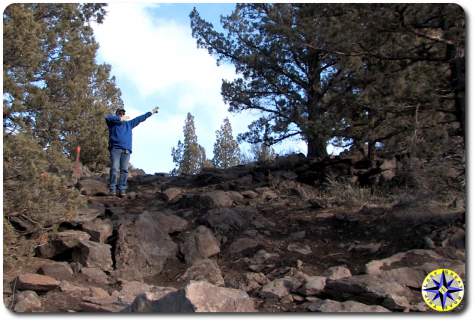
ADVANCED: The spotter may ask another observer to step in and perform one function for her. That function is to yell “STOP”. This is helpful when the spotter is backing the driver up or trying to have the driver make very minor adjustments. The observer does not provide any directions or advise to the driver, she only shouts out the command “stop” based on what the spotter requested. The spotter will relay the “stop” voice command with a stop hand signal when she hears the observer shout “stop”.
A good spotter can help a driver get through obstacles unscathed that they never could have driven on their own. Like any valuable skill, spotting takes practice in order for you to guide the blind down the trail.

